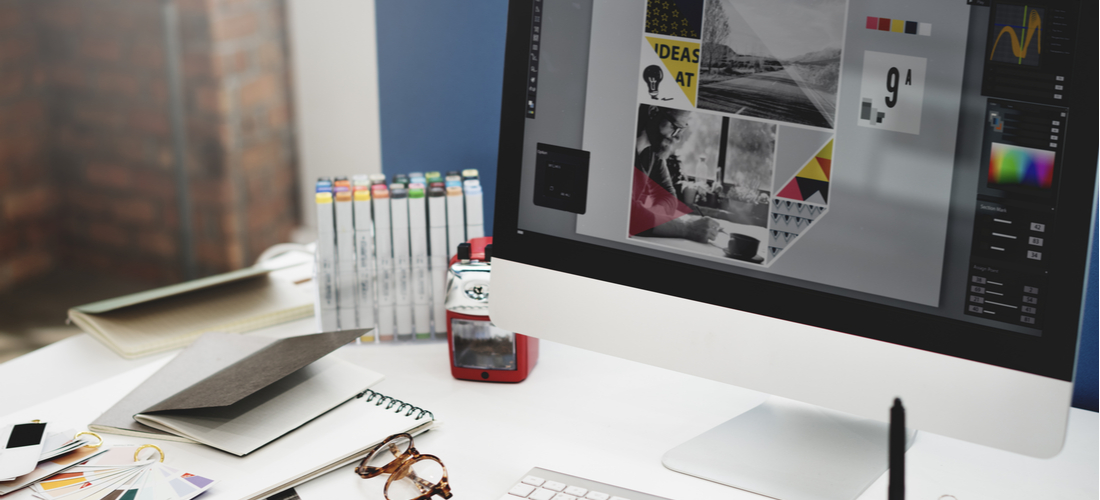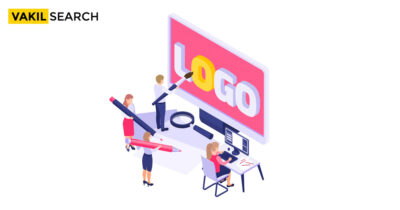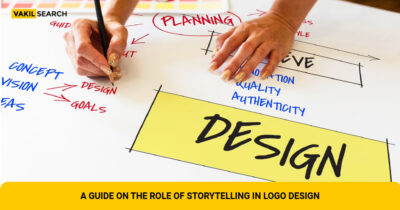Do you want to learn how to design a company logo? Before starting a brand identity project, you should be aware of the following information regarding the company logo.
A logo is a word and image-based symbol that identifies a company. An excellent logo conveys what a firm does as well as the brand’s values. The goal of logo design is to create the ideal visual brand symbol for a company. A Best Logo Maker For Brand, depending on the kind, typically consists of a symbol or brandmark, a logotype, and a phrase.
The Impact of Best Logo Maker
Let’s walk through the impact that logos have on their company.
- In a world where people and businesses are recognized more for what they represent than for who they are, symbols have grown increasingly essential. Consequently, their use of them has become increasingly sophisticated
- Some may argue that a logo is a symbol, but this is not the case. A logo serves as a representation of the company’s identity while also utilizing pre-existing emblems
- Symbols, when employed correctly, may be used to exploit the most unconscious level of human desire; consequently, when included in the logo design, symbols gracefully generate linkages between a company and that which the firm wishes to symbolize.
How to Pick the Best Logo Maker for You?
A logo maker lets you create a symbol that people instantly recognize and associate with your brand. But with so many logo makers out there, how do you pick the one that’s right for you?
Step 1: Define Your Needs
Before embarking on your logo-making journey, it’s essential to understand what you need. Consider your brand’s personality, the message you want to convey, and the emotions you want to evoke. This groundwork will serve as your compass in the vast sea of logo makers.
Step 2: Explore the Features
Each logo maker comes with its unique set of tools and features. Look for a logo maker that offers a variety of customizable options, including fonts, colours, symbols, and layouts. This way, you can experiment until you find the perfect combination that resonates with your brand.
Step 3: User-Friendly Interface
Designing a logo should be a joyful experience, not a confusing puzzle. Choose a logo maker with a user-friendly interface that lets you navigate smoothly through the design process. It should feel like a creative playground where your ideas can come to life effortlessly.
Step 4: Templates Galore
Templates are like the building blocks of logo design. A logo maker with a diverse collection of templates can provide you with a head start. You can choose a template that aligns with your vision and then customize it to make it uniquely yours.
Step 5: Compatibility with Different Platforms
Your logo will travel far and wide, from websites to business cards, social media, and more. Ensure that the logo maker you choose lets you export your logo in different formats and sizes so that it looks crisp and professional across all platforms.
Step 6: Budget-Friendly Options
Quality doesn’t always come with a hefty price tag. Look for logo makers that offer different pricing plans, including free options. This way, you can choose a plan that suits your budget while still getting access to valuable features.
Step 7: Read Reviews and Testimonials
Before committing to a logo maker, take a look at what others have to say. Read reviews and testimonials from users who have experienced the logo maker firsthand. Their insights can give you a clear picture of the logo maker’s strengths and weaknesses.
In the vast world of logo design, finding the best logo maker for branding can seem intimidating. But worry not! With Vakilsearch’s insights, you can craft your brand identity with precision and flair.
The Key Principles of Best Logo Maker
Logo design necessitates not only skill and expertise but also knowledge. Certain aspects of the process come with a lot of practice and working with various businesses with diverse messaging.
Creating a fresh logo design from scratch necessitates thinking about how to perfectly capture and represent the brand’s personality. And altering an old logo entails a slew of difficulties, such as selecting whether to entirely shift the brand’s direction or merely make minor changes.
1. Prepare the Groundwork
One of the most exciting aspects of being a designer is learning new skills with each job. Every client is unique, and even within the same profession, people do their duties in a variety of ways. Some preliminary work should be done before beginning to develop a logo. Knowing the client and their product thoroughly will help you choose the best design. You can get the Best Logo Maker Tool that Can help you grow the Business!
Make certain that you question your client why they exist. What exactly do they do, and how exactly do they do it? What distinguishes them from other brands? Who are they there for, and what do they value the most? Some of these inquiries may appear to be needless, but they can be difficult to answer and will lead to more questions about your clients’ company.
2. Make Use of a Sketchbook
Nevertheless, using a sketchpad allows you to rest your eyes from the glare of brightly illuminated pixels. And more significantly, record creative ideas far more rapidly and freely. You have complete freedom to explore with no computer interface.
3. Begin in Black and White
As previously stated, color is a crucial aspect of branding, but it can also be a distraction. It is difficult for a client to examine the main concept of the logo. Leaving color until later in the process allows you to concentrate on the concept of your logo design rather than an element that is usually much easier to adjust.
It’s hard to save a bad idea with an attractive colour scheme, while a good idea will still be good regardless of colour. When you think of a well-known sign, you usually think of the form first, followed by the palette. The most crucial aspects are the lines, shapes, and the concept itself. The Best Logo Maker can get all the basic design services for you!
4. Maintain the Appropriateness of Best Logo Maker
A logo design must be appropriate for the concepts, values, and activities it symbolizes. An attractive typeface will look better in a high-end restaurant than in a children’s nursery.
Similarly, a color scheme of brilliant pink and yellow is unlikely to help your message connect with male retirees. And, regardless of the sector, creating a mark that resembles a swastika isn’t going to succeed.
5. Make your Logo Design Simple to Remember
A good logo design is memorable. Helping a company to remain in the mind of a potential buyer despite competition from other brands for their attention. How can that be accomplished? Simplicity is the keyword here. A basic logo may often be remembered after only a brief glance, which is not possible with a highly detailed design.
6. Make an Effort to Stand Out
If a brand’s competitors have used the same typographic style, color palette, this is an excellent opportunity to differentiate your client rather than blend in. Trying something new can help your logo design stand out.
However, the fact that there is so much commonality in the marketplace does not necessarily imply that your job has become easier. Exhibiting your inventiveness in your design portfolio is one good strategy to attract the type of client you desire. Demonstrating the suitability of your concept will help dispel any reservations.
7. Think About the Overall Brand Identity
In terms of design, the wider picture includes every possible item on which your Company Logo design could appear. Always analyze how the identity operates in the absence of the logo.
While crucial, a sign can only take an identity so far. Creating a custom typeface for your brand is one method to produce consistent aesthetics. That typeface can then be utilized in marketing headlines as well.
8. Avoid being Overly Literal
A logo does not have to depict what a firm does; in fact, it is generally preferable if it does not. More abstract marks are frequently more durable. Historically, you’d exhibit your factory or perhaps a heraldic crest if it was a family-run business, but symbols don’t tell the story of what you do.
Instead, they make it abundantly plain who you are. When associations can be created between what the firm does and the shape and color of its mark, the meaning of the mark in the eyes of the public is added later.
9. Keep in Mind that Symbols aren’t Required
A symbol isn’t necessarily required for a logo. A custom wordmark can often work well, especially when the firm name is unique – like Google, Mobil, or Pirelli. Don’t be tempted to go overboard with the design because the emphasis is on the lettering.
Legibility is essential for any wordmark, and your presentations should show how your ideas operate in all sizes, large and tiny. Of course, words may not always work in extremely small applications. Thus adjustments may be required.
10. Make People Happy
Finally, incorporating a little wit into your logo design not only makes your job more enjoyable but may also help your customer become more successful. It is not suitable for every brand or sector.
However, organizations in the less contentious legal and financial areas are distinguished by stuffy and antiseptic branding. Adding a sense of humor to such customers’ identities might help them stand out.
Phases of Designing a Logo
In this section, we will walk through the phases of designing a logo.
So you’ve created a logo, but how do you put it to use? A logo design does not exist in a vacuum. After you’ve developed your design, the final step is to incorporate it into a larger branding scheme.
1. Take a Second Opinion
Don’t underestimate the value of a second (or third) set of eyes to spot design flaws. Noticing possible cultural misunderstandings, ugly forms of unintentional innuendos, words, and meanings.
After you’ve created your logo design concept, always have it reviewed by others. On the walls, pinning work-in-progress allows for continual peer assessment. It’s simpler to notice anything on paper than on a screen. If you’re a solo freelancer, find some trusted peers to review your work – and reciprocate. Remember to inspect it from all angles and on various supports.
2. Expand the Brand Universe
A logo design should be developed in conjunction with other activation points as part of a larger ‘brand universe’. Coherence between elements is preferable to consistency.
3. How to Make your Logo Design come Alive
In today’s branding industry, a static logo in the corner of a finished design is typically insufficient. To explore the potential of your logo design in motion, you may need to collaborate with animation or motion graphics specialists.
4. Assist your Client in Launching the Branding
Giving your finished logo design to a brand and letting them use it as they see fit can backfire. You should provide the client with a style guide that explains how to use your logo design properly.
This should include color selections, logo design minimum, and maximum sizes, placement rules, spacing (including exclusion zones from other design elements), and any clear no-nos like stretching or distorting.
5. Accept Public Logo Design Critiques
In the age of social media, everyone has an opinion on every Company Logo design. Criticism is no longer an infrequent irritation or something only specialists can offer. Anyone working on a high-profile rebranding project should be prepared for it.
With so many digital tools accessible nowadays, you may be tempted for logo design. Know about Process of drafting a Business Logo and prefect brand design on your computer?
Conclusion:-
Of course, a logo designer must keep in mind that the initial reaction of the audience is not necessarily a reliable indicator of the long-term viability of a logo. Keep a thick skin: take just the most valuable feedback into consideration, and let the rest wash over you.
FAQs:-
Can I design a logo myself?
Absolutely! With the right logo maker, you can unleash your creativity and design a logo that reflects your brand's identity. Logo makers provide you with the tools you need to craft a unique and memorable logo.
Is it legal to copy a logo?
someone else's logo without permission is not only unethical but can also violate copyright laws.
Can I use a logo if I change it?
If you make significant changes to a logo, it may be considered a new creation. However, it's essential to ensure that your modified logo does not infringe upon someone else's existing trademark. It's recommended to consult legal experts to navigate the legal aspects of logo modifications.
Read more:-










